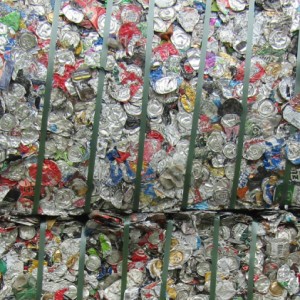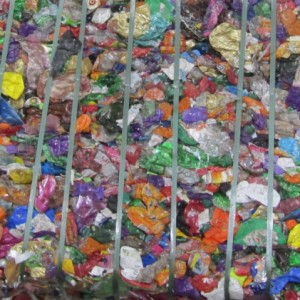Just a kilometre from our office is our state-of-the-art Plastic Recycling Facility. Despite that, one team member grumbled about walking there today in glorious sunshine, he would have been happier had the six of us travelled there in a two-car convoy. The driving route is twice the distance. I suspect that environmental kindness is not at the top of his agenda.
Back to the story. Yesterday's plant separates co-mingled recycling into its five main components; metal, glass, paper, cardboard and plastic, each of which is then sent on to a more specialised plant.
At this point I should make it clear that we have other similar facilities up and down the country which do have the ability to output a superior grade of recyclable glass, and we do have a specialised glass recycling facility which outputs top grade colour-separated glass granules with which it is possible to create objets d'art. It is simply the SouthEastLondon&Kent location which means that the input quality of recyclable glass is not up to scratch.
Plastic of all kinds, and aluminium drinks cans are then sent to this PRF where they are sorted with incredible accuracy, both by sophisticated machinery and well-trained staff. How many of us really, could be faced with this array on a conveyor and know immediately which item is PET1-through-7 and colour-sort it at the same time?
Each human operator stands facing the conveyor surrounded by TEN large bins; seven for clear/white plastics sorted by material (PET1-through-7), one for “Jazz”, one for black and one for non-recyclable. If any of you British readers remember The Generation Game you will understand what a monumental feat of quick-thinking this entails.
Once separated, the plastics and the aluminium are baled and sent on to anyone who wants to buy them. Apparently our aluminium drinks cans currently go to Germany.
If we have a client who requires “Jazz” to be more specifically graded, we can set the machines to separate according to their own specification.
Meanwhile, the staff here are just as happy as yesterday's team. Both sites operate on 12-hour shifts. I can't even begin to imagine that! Yesterday's site runs round the clock and accepts 50 freight (40-tonne) containers in every 24-hour period, today's site manages 5. I am not sure if it operates round the clock.
At this site, loose garbage is transported by large trucks (tractors?) with buckets and baled produce is shunted and lifted by machines similar to fork-lift trucks, but without the forks and with a “hug” apparatus in place of that. I have no idea what they are called because I had to wear ear-defenders throughout our visit but I do know that each little vehicle has its own name, beautifully stencilled on its side. Today I saw Aurora, Bella and Cinderella working as busy as bees.
Our host for the day was a woman who is not accustomed to showing visitors round the facility. She kept apologising for not knowing everything there is to know, but she loves her job. She is responsible for stock control and therefore, three times a week she needs to drive her personal cherry-picker to the output yard so that she can gain enough height to count all the bales. She is Brazilian and her cherry-picker is yellow, therefore it is named Pelé. She is on site from 6am until 6pm and apparently, couldn't be happier.
Unlike the last two days, this site attracts Starlings and not Herring Gulls. I have no idea why that might be, but if anyone reading this understands that, I would be grateful to hear an explanation.
Research exercise for you! What happens when a whale carcass is found on British coastline?
Extra 1; aluminium drinks cans destined for Germany
Extra 2; a bale of non-specific “Jazz”
Extra 3; the output yard – bales assorted by type and colour and stacked accordingly




Comments
Sign in or get an account to comment.


